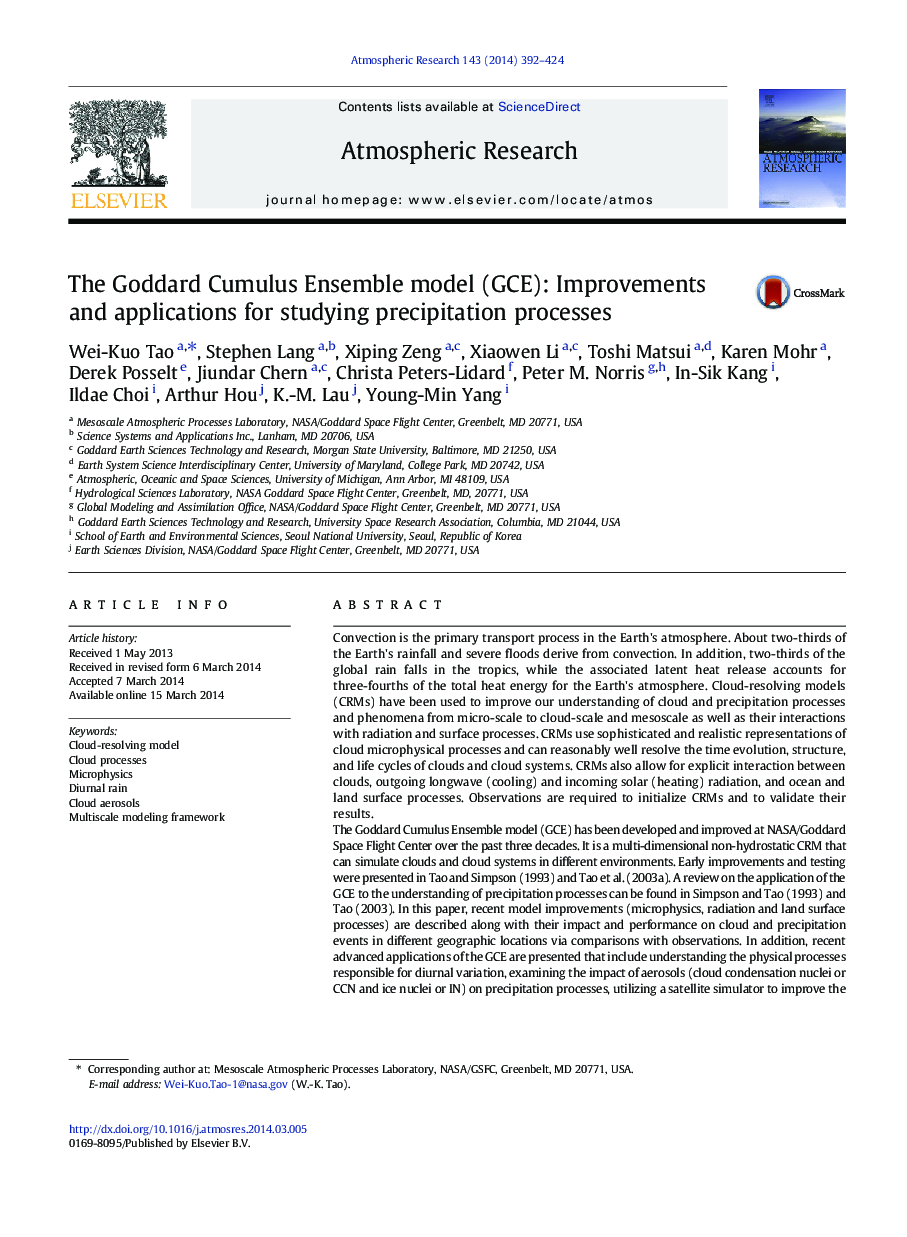| Article ID | Journal | Published Year | Pages | File Type |
|---|---|---|---|---|
| 4449919 | Atmospheric Research | 2014 | 33 Pages |
•The development and application of the Goddard cloud-resolving model is reviewed.•Improvements and additions to the model's cloud physics are detailed and highlighted.•Use in the study of rain and cloud processes and aerosol and surface effects is given.•Application to the representation of clouds in large-scale models is presented.•Methodologies for validating the model's performance are given also.
Convection is the primary transport process in the Earth's atmosphere. About two-thirds of the Earth's rainfall and severe floods derive from convection. In addition, two-thirds of the global rain falls in the tropics, while the associated latent heat release accounts for three-fourths of the total heat energy for the Earth's atmosphere. Cloud-resolving models (CRMs) have been used to improve our understanding of cloud and precipitation processes and phenomena from micro-scale to cloud-scale and mesoscale as well as their interactions with radiation and surface processes. CRMs use sophisticated and realistic representations of cloud microphysical processes and can reasonably well resolve the time evolution, structure, and life cycles of clouds and cloud systems. CRMs also allow for explicit interaction between clouds, outgoing longwave (cooling) and incoming solar (heating) radiation, and ocean and land surface processes. Observations are required to initialize CRMs and to validate their results.The Goddard Cumulus Ensemble model (GCE) has been developed and improved at NASA/Goddard Space Flight Center over the past three decades. It is a multi-dimensional non-hydrostatic CRM that can simulate clouds and cloud systems in different environments. Early improvements and testing were presented in Tao and Simpson (1993) and Tao et al. (2003a). A review on the application of the GCE to the understanding of precipitation processes can be found in Simpson and Tao (1993) and Tao (2003). In this paper, recent model improvements (microphysics, radiation and land surface processes) are described along with their impact and performance on cloud and precipitation events in different geographic locations via comparisons with observations. In addition, recent advanced applications of the GCE are presented that include understanding the physical processes responsible for diurnal variation, examining the impact of aerosols (cloud condensation nuclei or CCN and ice nuclei or IN) on precipitation processes, utilizing a satellite simulator to improve the microphysics, providing better simulations for satellite-derived latent heating retrieval, and coupling with a general circulation model to improve the representation of precipitation processes. Future research is also discussed.
